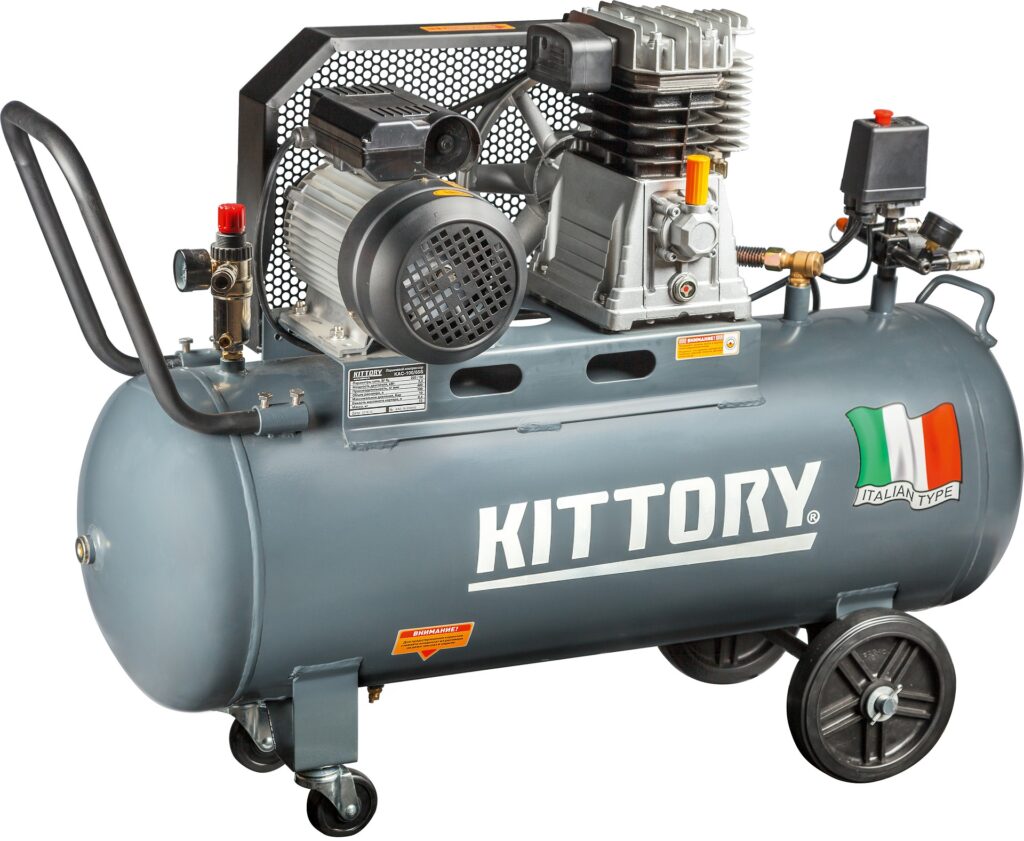Air compressor maintenance involves a number of approaches that need to be applied to varying degrees on compressors of all models and makes. You should inspect key components of the machine routinely and service them if needed whether you operate one compressor or several. If you don’t do this, it could lead to costly repairs of the compressor or even premature failure. This article will tell you how to maintain these units properly.
Everything is Connected
The reason air compressor maintenance is so important is that high-powered tools rely on these units. For example, pneumatic jackhammer powering relies on rotary screw compressors, which are commonly used at construction sites. A construction crew could fall drastically behind schedule if one of these compressors breaks down on the job.
For obvious reasons, you’ll pay a high price if you fail to maintain a rotary screw air compressor properly. Think about all the money that is on the line with major construction projects, where investors or local governments commission monuments, new buildings, stadiums, and recreational facilities. These projects get funded according to strict timetables. They can only be fulfilled with working machines and tools.
Maintenance Tips
Every 8 Hours (or Daily)
- Drain receiver tank, drop legs and traps in the distribution system.
- Maintain a lubricant level between high- and low-level marks on bayonet gauge. If lubricant is contaminated, drain and replace.
- Give compressor an overall visual inspection and be sure safety guards are in place.
- Check lubricant pressure on pressure-lubricated units. Maintain 18 to 20 PSIG when the compressor is at operating pressure and temperature. High-pressure rated compressors should maintain 22 to 25 PSIG of lubricant pressure.
- Check for any unusual noise or vibration.
- Check for lubricant leaks.
Every 40 Hours (or Weekly)
- Be certain pressure relief valves are working.
- Check the compressor for air leaks.
- Clean the cooling surfaces of the intercooler and compressor.
- Inspect lubricant for contamination and change if necessary.
- Check the compressed air distribution system for leaks.
- Clean or replace the air intake filter. Check more often under humid or dusty conditions.
Every 160 Hours (or Monthly)
• Check belt tension.
Every 500 Hours (or 3 Months)
- Check lubricant filter on pressure-lubricated units (more frequently in harsher environments).
- Change lubricant (more frequently in harsher environments).
- Torque pulley-clamp screws or jam-nut.
An air compressor transforms ambient air into a power source for machines and tools. All of an air compressor’s parts must be maintained to make sure it is functioning properly.
Tighten the Nuts and Bolts
Some of the nuts and bolts are bound to get loose because an air compressor goes through month after month of daily use. The parts that comprise the machine move as the machine vibrates. Loose screws and fasteners don’t mean the unit is falling apart. They simply show it is time to tighten them using a wrench.
Vibrations intensify when an air compressor is used to power heavy-duty tools. Test each fastener manually to see if there is any give and determine whether loose nuts or bolts are indeed the problems. Twist on the loose fastener until you can feel the bolt getting tighter. Don’t try to turn the nut after it has stopped moving. You might strip the bolt if you attempt to over-tighten.
Read the User Manual
Using the user manual, some of the most common problems with an air compressor are easy to solve. You’d be surprised how many air compressor owners forget entirely about the manual and call for help even for some very simple issues. There could be an issue with one of the inlets or connections that will stump you at first. If this happens, don’t tinker with it manually. Don’t try to fix anything on your air compressor without checking the user manual first. An improper DIY attempt could void the warranty if you bought the compressor recently.
Every 2,000 hours or a year of use, check the contacts and pressure switch diaphragm. Check the contact points in the motor starter. Some companies ship lubrication compressors without lubricant in the crankcase. You need to add a sufficient amount of lube to the crankcase before starting the compressor to register between the low and high marks on the bull’s eyesight gauge or the dipstick.
Ask the manufacturer for recommendations or use the specified lubricant. Under testing, certain synthetic lubricants minimize friction and wear, reduce carbon and varnish deposits, and limit lubricant carryover. They will extend the life cycle and performance characteristics and are highly recommended. Check the manufacturer’s specifications to see the correct amount of viscosity and lubricant to use for your model and application.
Clean the Intake Valves
An air compressor needs clean intake vents to function at full capacity. Dust particles and other air-bound elements will be trapped into the vents as you put the compressor through months of ongoing use. This is why you should clean the vents regularly.
Industrial air compressor maintenance is one of the crucial areas of system management at factories and pressing plants. With so many tools, machines, and functions relying on compressed air, it is critical to make sure every compressor within an industrial setting is capable of operating as and when needed. The failure of a compressor can lead to costly downtime.
Final Thoughts
Commercial air compressor maintenance has become an industry due to the high stakes at play. Companies that serve all sorts of private sector industries rely on compressed air.
No construction crew can properly manage itself without an air compressor maintenance checklist. You can say the same for any company that works with air compressors. It doesn’t matter whether the machines are used for heavy-duty or light industries or productions. With timely, proper maintenance, you can avoid the setbacks and financial pitfalls that often accompany air compressor failure. Use the following air compressor maintenance guide to ensure your machines function at full capacity.







